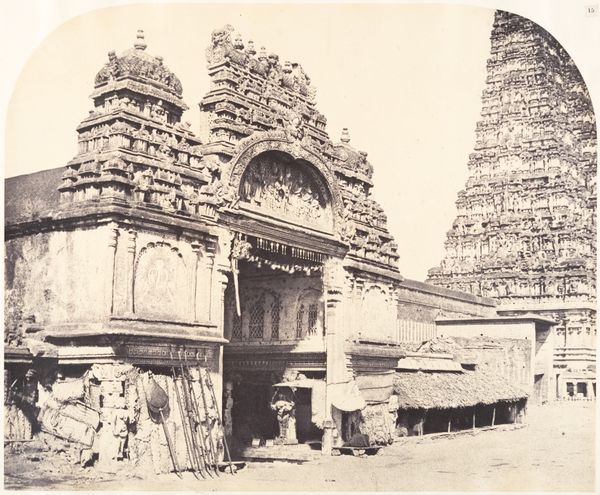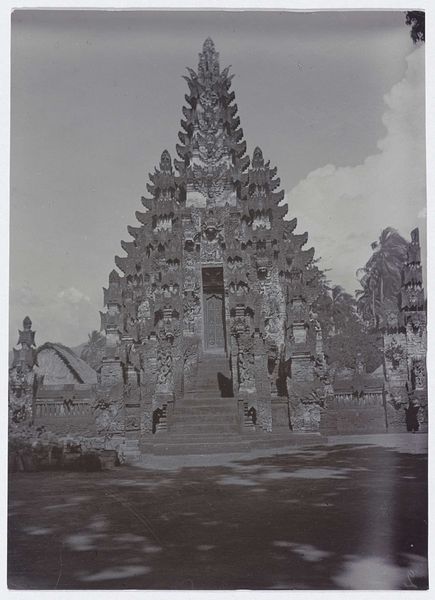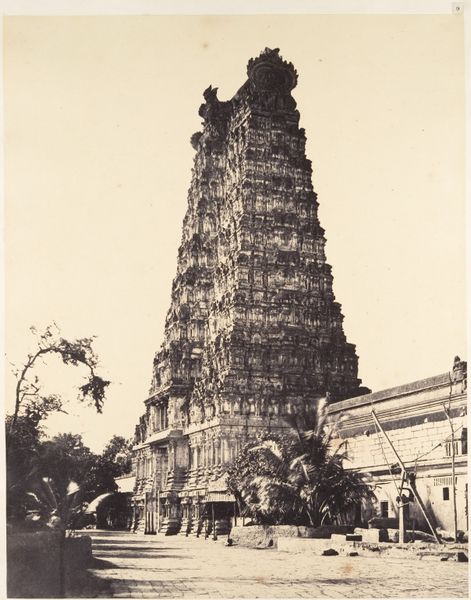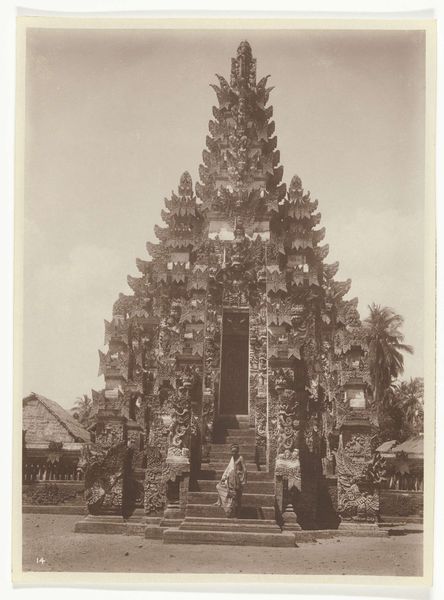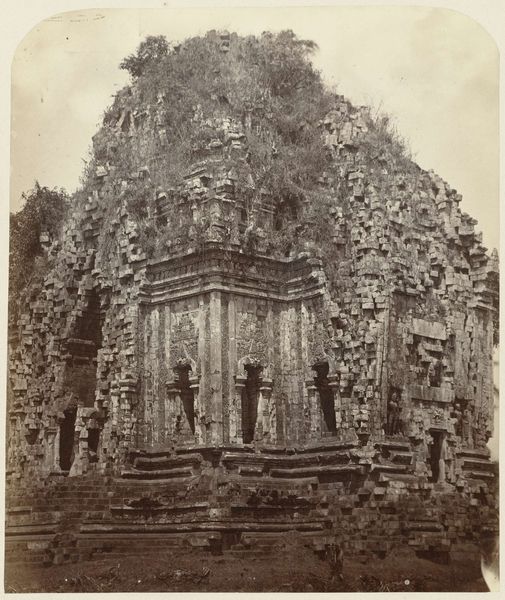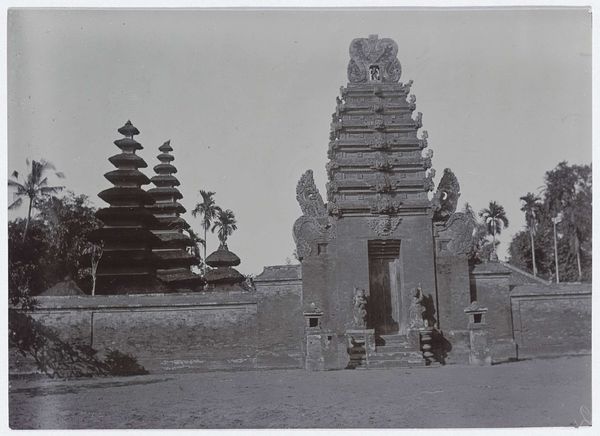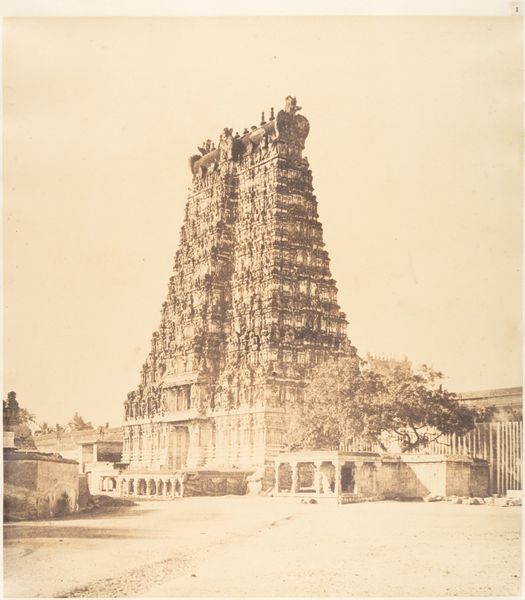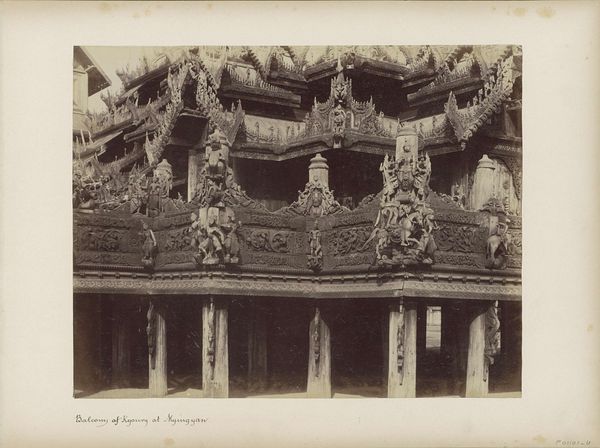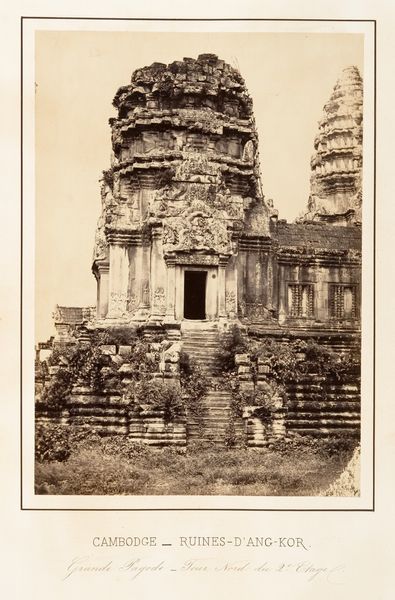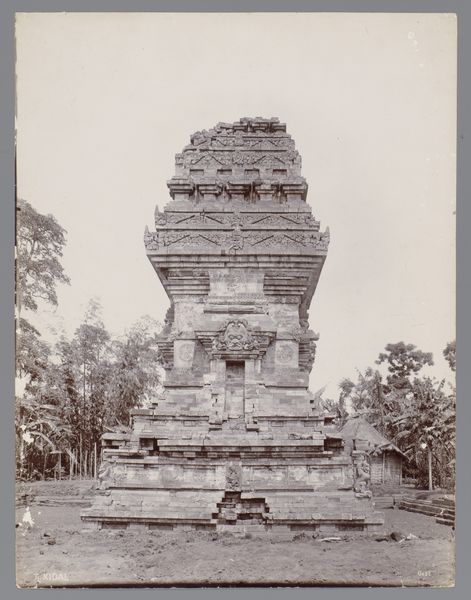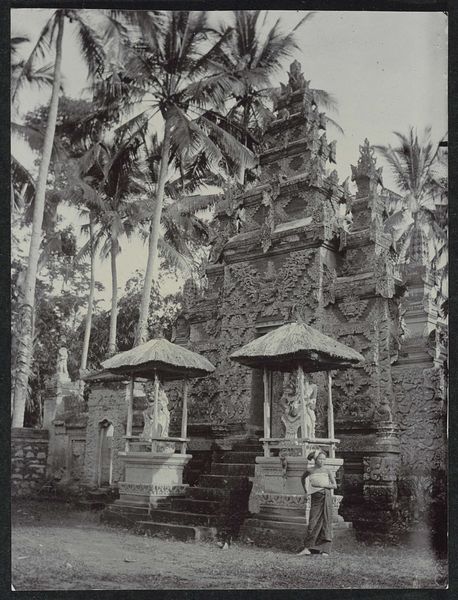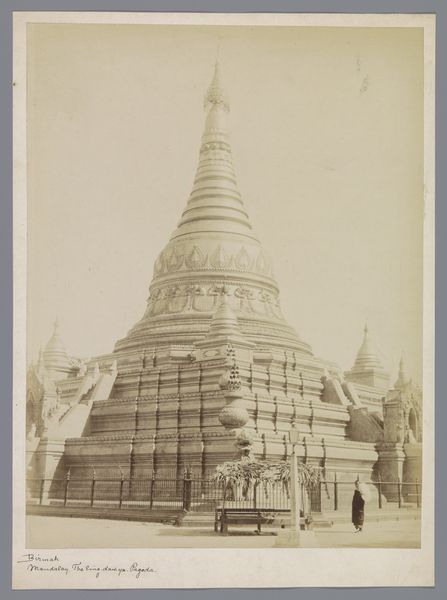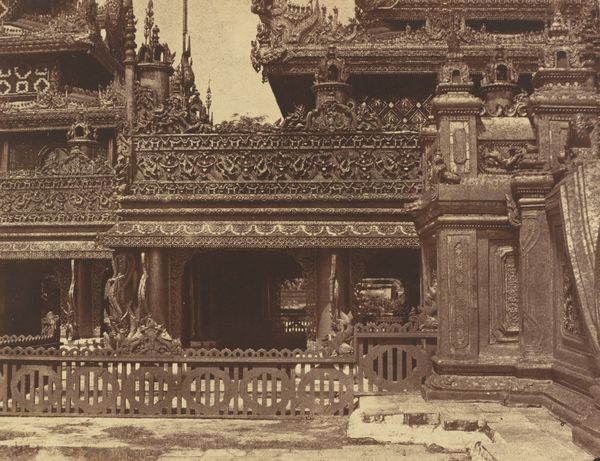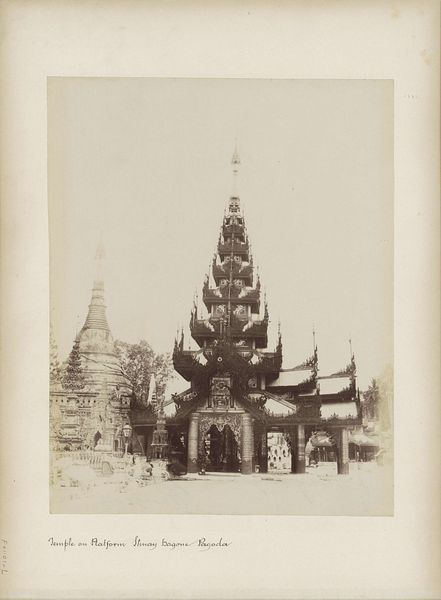
photography
#
asian-art
#
photography
#
19th century
Dimensions: Image: 23.9 x 18.3 cm (9 7/16 x 7 3/16 in.)
Copyright: Public Domain
Curator: What a strikingly textured photograph. It's imposing and detailed at the same time. Editor: Yes, it is. This albumen print, titled "Juggernaut Car, Madras", was captured in the 1850s by Frederick Fiebig. You can find it at the Metropolitan Museum of Art in New York. What captures your eye first? Curator: Definitely the elaborate detail. The way the light catches all those intricate carvings gives the whole structure a layered, almost living presence. It reminds me of how cultures imbue objects with spirit through complex ornamentation. Editor: Absolutely. Socially, the Juggernaut car represents the intersection of religion and public spectacle. Images like these became crucial in shaping European understandings – and misunderstandings – of Indian culture and religious practices. Curator: I am curious, how was it misunderstood? Editor: In that era, such imagery often fed into narratives of exoticism, even barbarity. It contributed to a Western gaze that framed these processions as chaotic and irrational. Curator: A colonial perspective, perhaps. Do you think the photographer intentionally wanted it that way? Editor: It is more nuanced. Photography in India during this period operated within the structures of power, patronage, and colonial networks. Photographers were often commissioned to document "native" life. They certainly captured important details, yet these images simultaneously reinforced power dynamics. Curator: This perspective of understanding really makes the image even richer in a psychological sense. The way light plays across its form seems now like an active attempt to both reveal and obscure the truth. Editor: Agreed. "Juggernaut Car, Madras" is much more than just a picture. It's an artifact laden with cultural meaning, historical tension, and the ongoing negotiation of cross-cultural representation. It's good to explore. Curator: Indeed. Let’s invite visitors to consider the power of imagery as we continue.
Comments
No comments
Be the first to comment and join the conversation on the ultimate creative platform.
